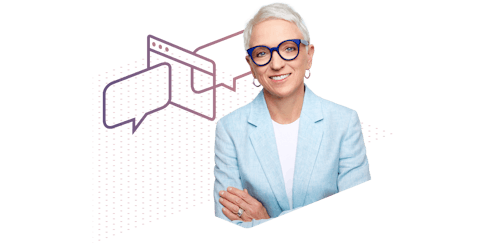Selling the Cloud
Customer conversations

How to Sell Cloud Services
Cloud Selling has dramatically impacted the way businesses buy software. And as the cloud layers have matured from IaaS through PaaS to SaaS sales over the years, it has transformed the playing field for providers along the way. The most critical implications of maturation to cloud services sales teams are two-fold — the increased proliferation of services being provided at each layer within the cloud and the commoditization of infrastructure services as buyers now expect to consume straight to SaaS.
Sales organisations that make the adjustments necessary to successfully navigate through this changing landscape will have the ability to capitalise on a significant market opportunity.
According to Gartner:
"As of 2016, approximately 17 percent of the total market revenue for infrastructure, middleware, application and business process services had shifted to cloud.” Moreover, “Through 2021, this will increase to approximately 28 percent.”
The future isn’t up in the air — it’s in the clouds.
As this future unfolds and firms outside the technology industry enter the cloud computing services space, sales organisations will need to adjust how they engage with customers. Rather than selling almost exclusively to information technology (IT) buyers, cloud computing service providers now need to effectively sell to functional or business unit stakeholders. The emphasis is on the value to the business — not on the underlying technology. As a result, the nature of the sales dialogue between providers and customers looks and sounds very different than it did in the days of legacy on-premise applications.

CRM Enabled Workflow Tools
We support our partners with a full suite of CRM tools that align with different phases of the sales cycle – from call planning and account growth to ongoing sales enablement and marketing. Each tool complements skills developed in our sales training programmes.
Learn More10 SaaS Sales Tips
- Learn to Sell to New Buyers: While IT still maintains a strong presence in SaaS sales, they are not the sole decision maker. In fact, IT stakeholders have moved to more of an influencer position, as traditional business-unit stakeholders and C-level executives take the prime buying position. Cloud Sales Professionals must not only understand the different buyer profiles and their buying preferences, but they must also understand how each defines value.
- Focus on Different Stakeholder Needs: It’s not enough to understand that there are different stakeholders in the buying decision — SaaS Sales Professionals must also understand their unique needs and specifically address the concerns relevant to each player.
- Drive Buyer Consensus: Top performing SaaS Sales Professionals make it their responsibility to bring customer stakeholders together, capture their disparate viewpoints, and create the opportunity for the difficult conversations to take place. They capitalise on the opportunity to hear the concerns and help their internal coach work through the issues real time.
- Align on a Buyer-Centric Sales Process: Successful cloud computing service providers are able to absorb and apply lessons learnt from every customer-facing function. Sales, marketing, customer service and support, and product development must treat organisational learning as a formal discipline; as customers use the product and achieve business value, the provider uses these insights in order to improve its products and processes to add even more value.
- Communicate Value Without Overpromising: Overpromising on traditional on-premise applications was once a low-risk proposition: once a customer committed to a solution, they typically had little choice but to forge ahead given the often significant upfront capital investment. Selling SaaS applications, by comparison, give customers the opportunity to hold vendors accountable for their product claims — when they’re disappointed, they’re less likely to renew their subscriptions. A well-trained sales team will understand how to explain and demonstrate a solution’s business value without resorting to exaggeration or unsustainable claims.
Click Here to Download the White Paper, Selling the Cloud: 10 Best Practises for Sales Execution and Access all 10 Tips

White Paper: Selling the Cloud - 10 Best Practises for Sales Execution
DownloadGet industry insights and stay up to date, subscribe to our newsletter.
Joining our community gives you access to weekly thought leadership to help guide your planning for a training initiative, inform your sales strategy, and most importantly, improve your team's performance.






